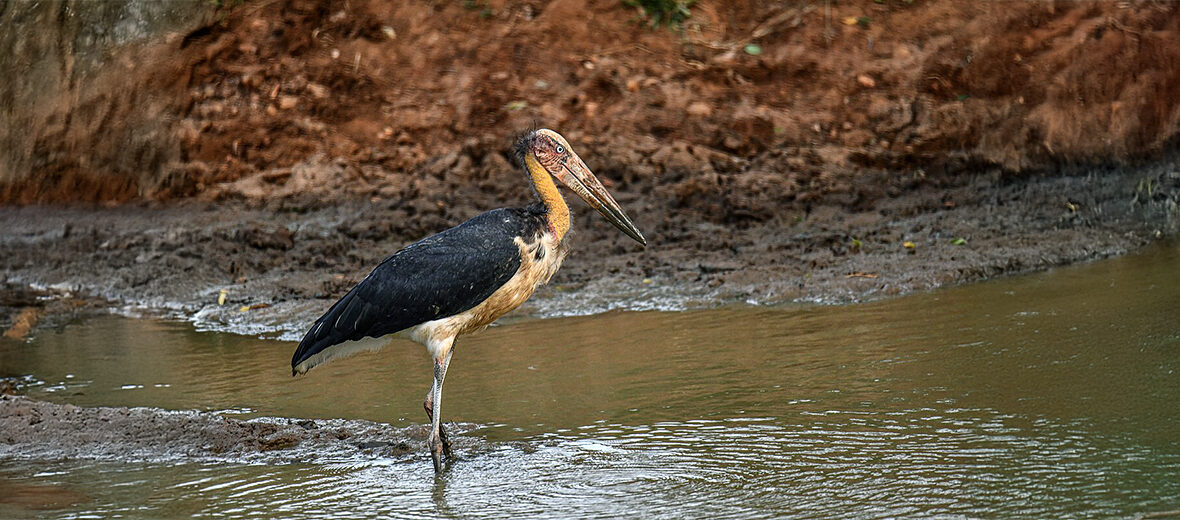
The lesser adjutant is a large sized wading bird that hails from the stork family, aka Ciconiidae. They can be found in India and southeast Asia. They dwell in habitats with large rivers and lakes inside heavily wooded regions, with freshwater wetlands in agricultural areas, as well as coastal wetlands including mudflats and mangroves. These birds are threatened by habitat loss and destruction at the hands of residential and commercial developments,, farming, marine and freshwater aquaculture & logging, dams, fires, and fire suppression; hunting; trapping; overfishing; recreational activities, that interrupt their nesting sites; invasive species that introduce diseases; and pollution, in the water, on land, and in the air. The IUCN lists these large birds as Near Threatened. Their population trend is listed as unknown.
First the Stats…
Scientific name: Leptoptilos javanicus
Weight: Up to 12.6 lbs.
Length: Up to 37 inches
Height: Up to 47 inches
Wingspan: Up to 8 feet
Lifespan: Up to 40 years
Now on to the Facts!
1.) There are only an estimated 15,000- wild individuals remaining.
2.) Like other storks they retract their necks in flight.
3.) Fish, frogs, reptiles, larger invertebrates, mice, rats, and sometimes carrion (dead animals) are all on the menu.
4.) They are sight hunters that can often be seen at the water’s edge scanning the marshes for prey.
5.) Their vocalizations include clattering their bill, hissing, moaning, and producing a hoarse wailing sound.
But wait, there’s more on the lesser adjutant!
6.) During courtship females will lift their heads in a scooping motion and engage in bill-clattering aka the “Balancing Posture”.
7.) These birds are solitary until the breeding season where they will form loose colonies of up to 20 pairs.
Did you know…?
Lesser adjutants were moved from “Least Concern” to “Vulnerable” in 2020. But it has been proven that this may have been in error, seeing as they are not as sparingly populated as once thought. So, they might again be listed as Least Concern in time.
8.) Nests consist of a large platform of sticks situated in a tall tree, and can measure up to 3.28 feet wide and deep.
9.) Females lay up to 4 eggs that hatch in up to 30 days. The eggs are very quickly soiled by feces after being laid. This is due to the adults engaging in urohidrosis (excreting feces “poop” on their legs to keep cool).
10.) Chicks fledge in up to 60 days and soon leave the nest to start life on their own.
Now a Short Lesser Adjutant Video!
Be sure to share & comment below! Also, check out the Critter Science YouTube channel. Videos added regularly!

Want to suggest a critter for me to write about? Let me know here.
Some source material acquired from: Wikipedia & IUCN
Photo credit: Senaka Silva



